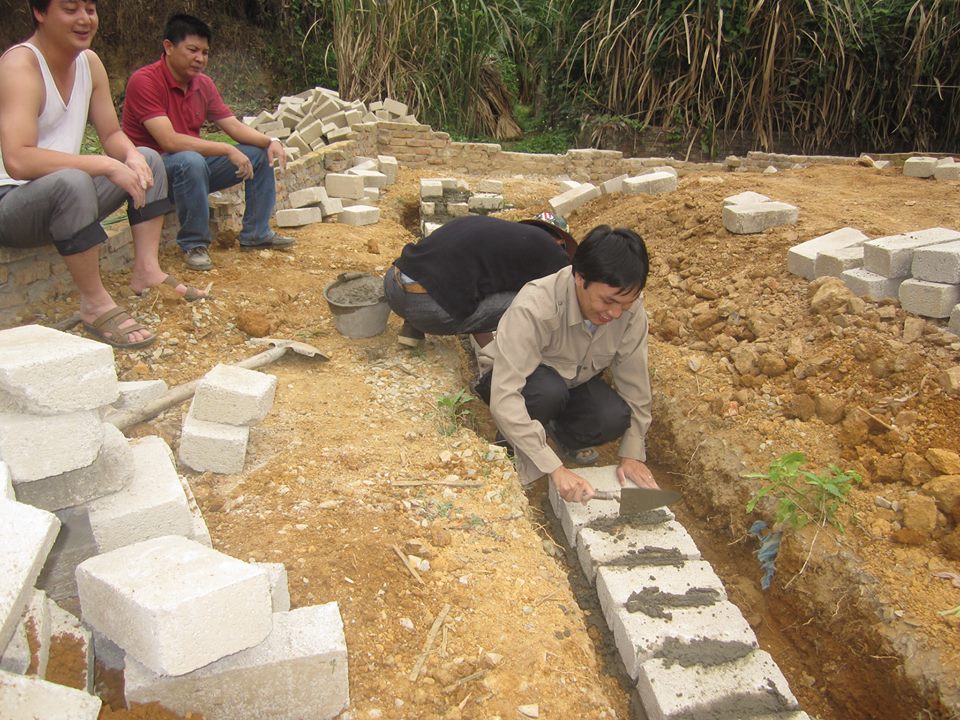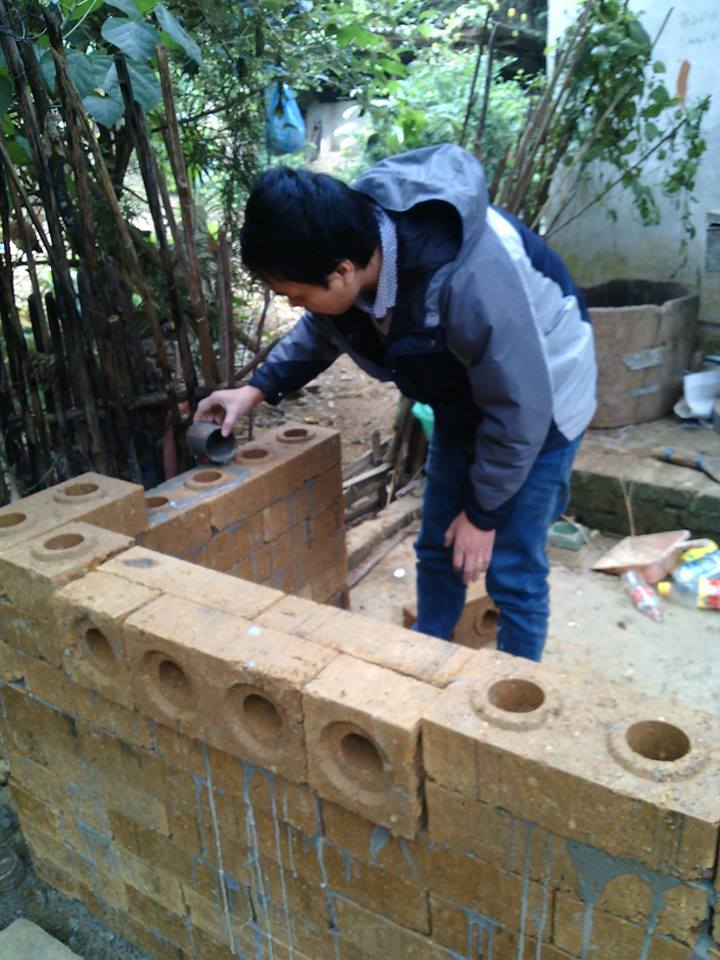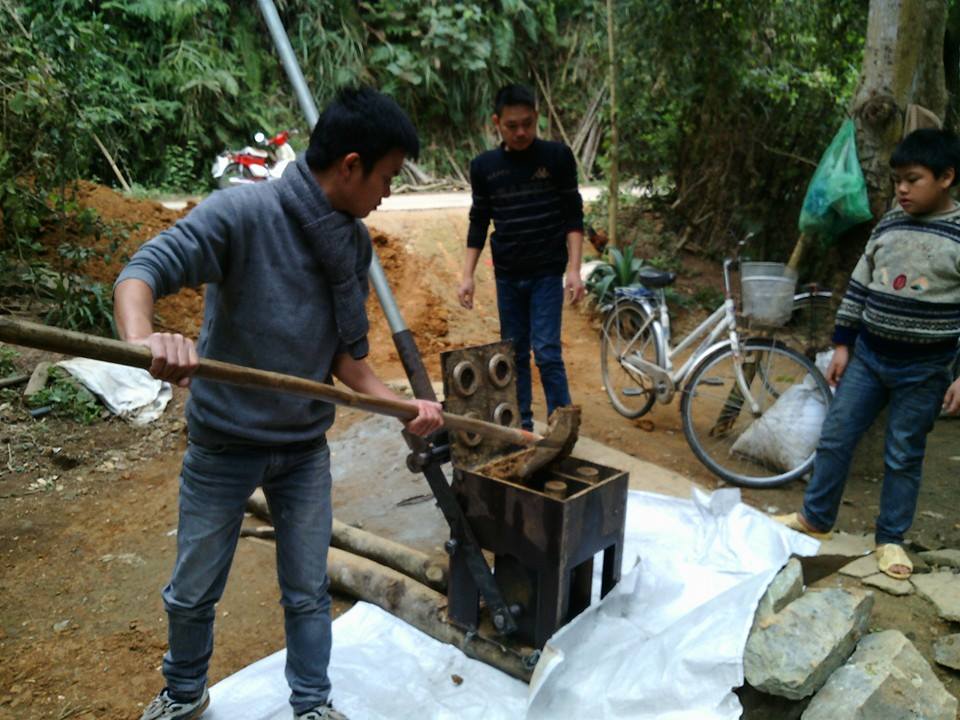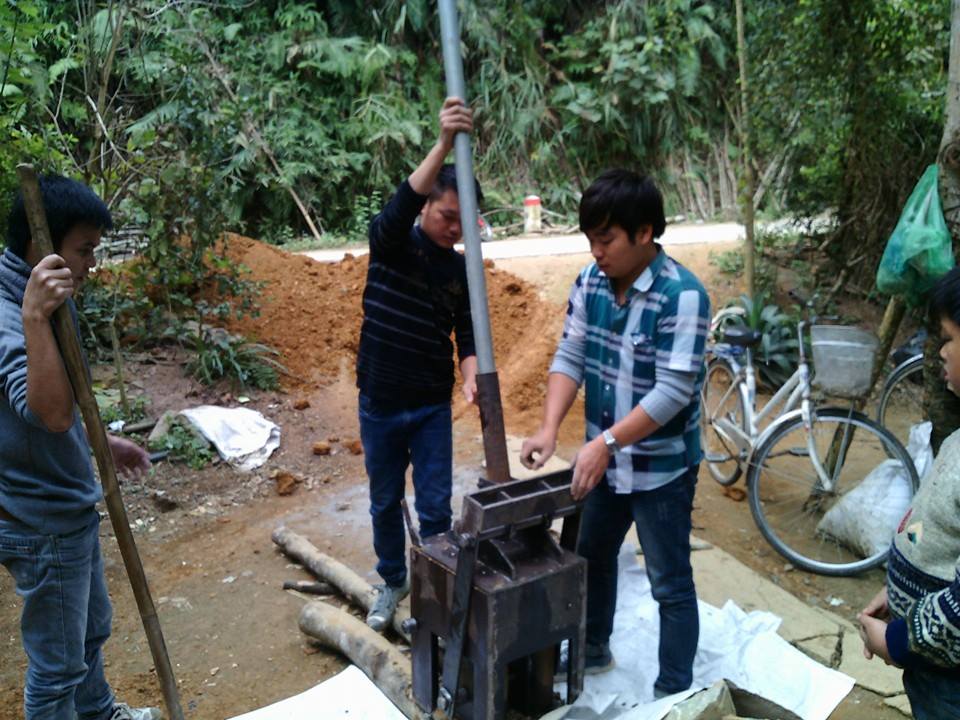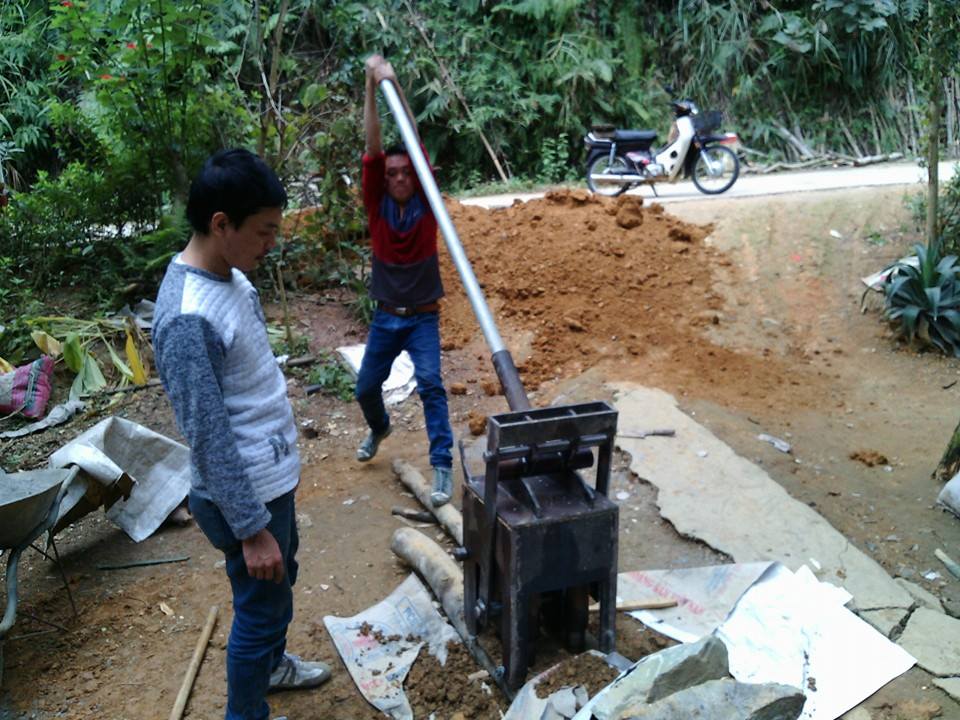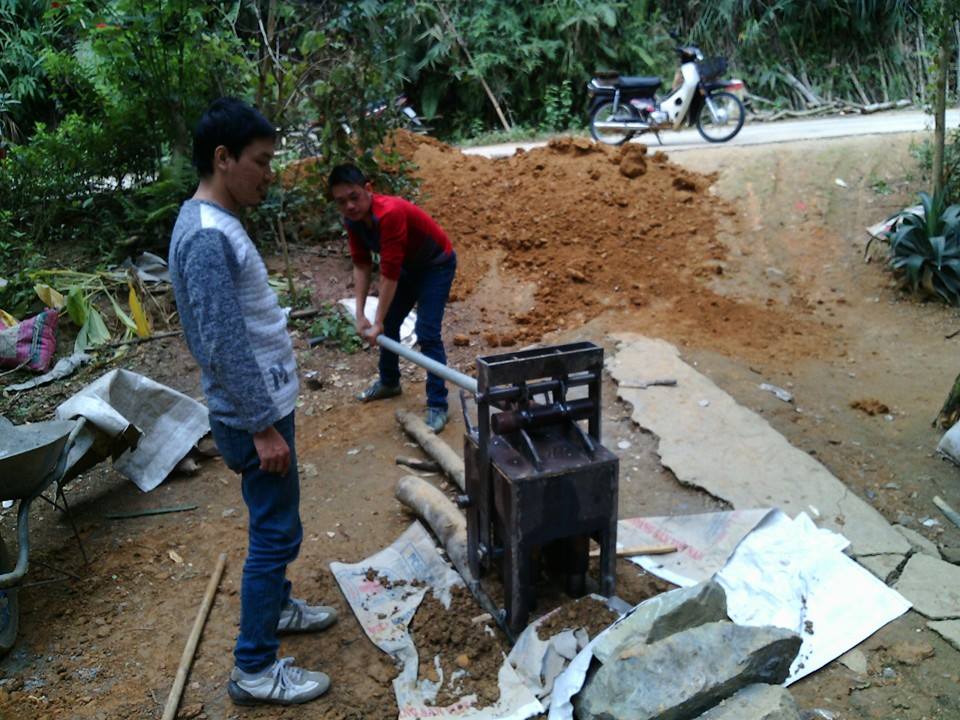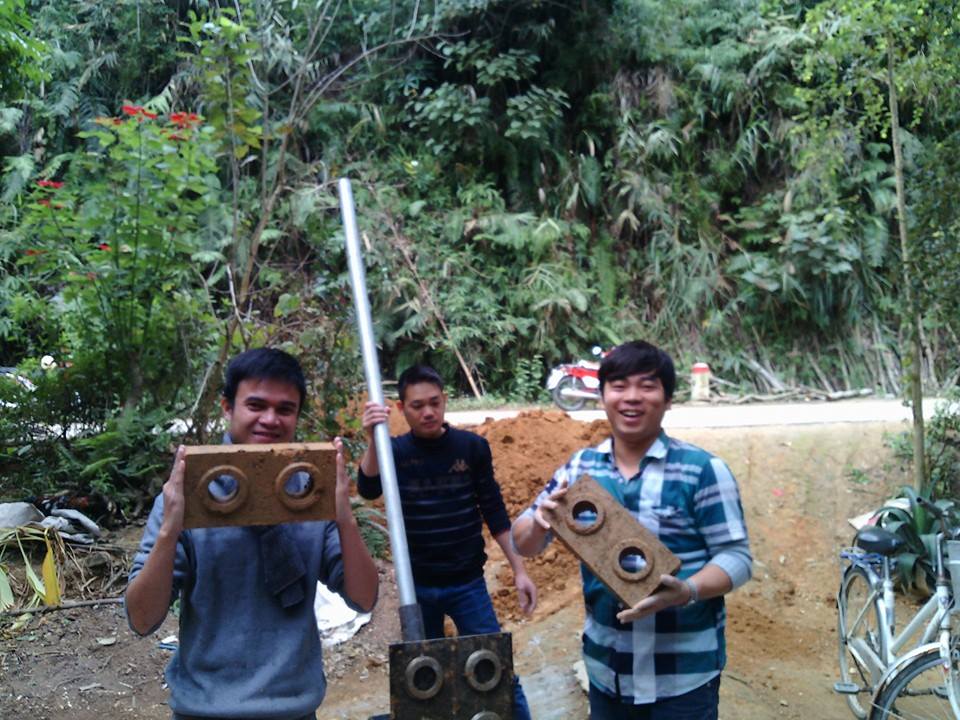 actions
actions
Capacity building with compressed blocks in Bac Kan
In 2014 the cost of construction materials doubled in Vietnam, and the cost of concrete blocks, the most common building material for low-cost housing tripled. SELAVIP calculates that the minimum 20million VND (nearly $USD1000) needed to build a house in 2013 is no longer affordable to low-income people.
Bac Kan is a hill town with an abundance of hill soil in the local area as well as bamboo and acacia trees. A traditional mixture of bamboo wattles and soil is a popular building material for poor households, however it is not very solid. Inspired by the use of compressed earth bricks by Nab.Arc architects to build a school in Muong Te district, Young Professionals Le Nhu Nga and Pham Tuan Anh, with local community builders Nguyen Truong Tam and Mrs. Hue applied for CAN’s Perween Rahman Fellowship to experiment with compressed blocks as an alternative low-cost building material to concrete blocks in Bac Kan town.
As the soil type is very different between Bac Kan and Muong Te districts, the first thing we did was bring a sample of the Bac Kan hill soil to Nab.Arc architects to discuss if using compressed blocks in Bac Kan was possible. They recommended feasibility testing of the earth-brick material for hardness level and resistance.
In September with the woman union and local builders we held a workshop to test the hardness and resistance of six different earth-brick mixtures. For the mixtures we experimented with the use of rough versus clean hill soil, rubble or no rubble, and the ratio of cement to soil and let the bricks to cure for two weeks. We tested the cured samples against bricks we’d brought back from Nab.Arc; to test for hardness we used a hammer to beat the bricks, and to test for resistance we soaked the bricks in water for a week. The result was that our bricks were just as strong as Nab.Arc bricks.
In the past many of the community used a mixture of straw and brick to build their houses, but are now more comfortable with concrete, so confessed they were not ready to switch to earth-bricks. In a consultation session with technology professors, engineers and builders they expressed a machine was necessary to reach the minimum pressure, and that the bricks can only be used to build a one storey house, and cannot be exposed to too much water, so require an overhanging roof.
In November we purchase the CETA-RAM block press. The CETA-RAM is a manually operated block press, developed by Roberto Lou Ma specifically for the production of low cost hollow soil-cement building blocks following the Guatemalan Earthquake in 1976. However we found the block produced is too heavy for Vietnamese physique, so changed the features such that the size of the brick smaller, with a dovetail like lego bricks so the assembling is easier. The altered CETA-RAM block press can now produce 2 bricks at one time instead of one.
In December we started pressing bricks in Huyen Tung commune with great success, the community people were very happy with the bricks out of a more professional press, and we have started building a test wall with the earthbricks.
Future actions :
1. Now we plan to organize meeting in Huyen Tun commune to choose pilot houses to build using the bricks
2. Young Professionals, with Commune Youth Union, will build the pilot house and calculate the real cost per house.
3. We are organizing a workshop to share and promote the new low-cost building material, targeting those who need to improve, or build their homes but can not afford concrete bricks.
Location:
Vietnam
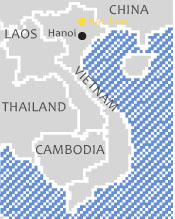
Team:
CAN Vietnam
Year:
2014
Capacity building with compressed blocks in Bac Kan

